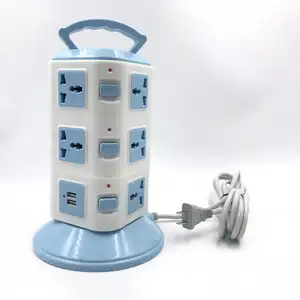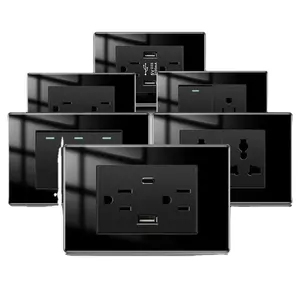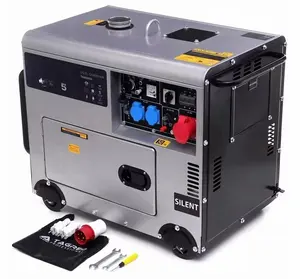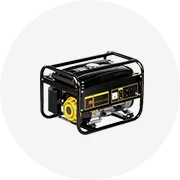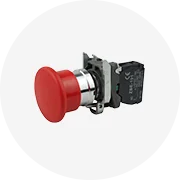



6:41 7:39 7:43 6:39 ISUZU FTR FSR ID240mm 용 고품질 47210-2750 크라운 휠 피니언 공장
₩155,600 - ₩166,715
최소 주문량: 10 개



트랜스미텍 CL290B 자동차 부품 유압 클러치 마스터 실린더 OEM 9674259180 804922 승객 Citroen PEUGEOT
₩5,558 - ₩22,229
최소 주문량: 100 개
조각 당 선박: ₩29,801







Kowze 예비 부품 변속기 부품 프로펠러 샤프트 도요타 Hilux Revo GUN125 37140-0K112 용 드라이브 샤프트 카단 샤프트
₩55,433 - ₩64,880
최소 주문량: 2 개







Propshaft 꼬리 샤프트 TRANSMITEK 후방 프로펠러 샤프트 5273310AA 지프 나침반 B-0407 Dorman 946-309 Cardone 65-3002
₩41,679 - ₩159,768
최소 주문량: 5 개
조각 당 선박: ₩179,329







OE 3273AL DS6722RA 3273.AL 푸조 206 1.4/1.6MT 207 1.4/1.6MT 시트로엥 C2 1.4/1.6MT 드라이브 샤프트 (오른쪽) (브랜드 Datwy)
배송 준비 완료
₩37,511
최소 주문량: 10 개
조각 당 선박: ₩29,926


드라이브 샤프트 왼쪽 3272.XV 3272XV 푸조 408 12 스틸 자동 서비스 ISO9001 및 TS14969 OEM 표준 3272.XV, 3272XV CN;ZHE
₩55,294 - ₩59,740
최소 주문량: 10 개












시트로엥 포드 마즈다 푸조 3293.35 329335 3293.35S3 1148221 1061864 C202-22-530 용 자동차 예비 부품 드라이브 샤프트 벨로우즈
₩1,098 - ₩1,640
최소 주문량: 100 개






OE 9810160380 9810160480 9800425580 9800425680 9800425780 자동차 푸조 301 시트로엥 엘리제 AT6 AT8 에 대한 새로운 변속기 샤프트
배송 준비 완료
₩38,900 - ₩48,625
최소 주문량: 4 개
조각 당 선박: ₩99,446

자동차 예비 부품 드라이브 샤프트 내부 CV 조인트 키트 시트 26x32x31 1K0 498 103C 1K0498103C 661011 SO-901 에 사용
₩17,089 - ₩17,575
최소 주문량: 200 개
조각 당 선박: ₩11,837

CV 차축 드라이브 샤프트 어셈블리 푸조 206 1.4 1.6 8V 16V HDI 32726E 3272.6E 3272.6E 3272.7E 에 적합
₩50,015 - ₩63,908
최소 주문량: 30 개
조각 당 선박: ₩46,319






새로운 CV 조인트 프론트 드라이브 액슬 PE10 23*25*56 푸조 206 사용 (모델 VIEJO)
배송 준비 완료
₩31,259 - ₩100,029
최소 주문량: 2 개
조각 당 선박: ₩32,968






OE 3272AE 3273CT 9636798680 3272AF 푸조 206 207 시트로엥 C2 1.4/1.6MT 변속기 시스템 구동축 (왼쪽) (브랜드 Datwy)
배송 준비 완료
₩36,122
최소 주문량: 2 개
조각 당 선박: ₩39,109












OE 3272AA 32734Y 3272AE 9802763280 3273AL 3272PP 3273PW 32722F 32739L 자동차 새로운 변속기 샤프트 207 206 시트로엥 C1 C2 C3
배송 준비 완료
₩38,900 - ₩48,625
최소 주문량: 4 개
조각 당 선박: ₩99,459

OPEL CORSA B 31263AT 374039 374259 374317 374362 374794 AEL-45324 사용되는 드라이브 샤프트 CV 차축
₩41,679 - ₩90,304
최소 주문량: 50 개






KobraMax 자동차 드라이브 샤프트 더스트 부스트 커버 3287.88 시트로엥 푸조 자동차 액세서리
배송 준비 완료
₩1,070 - ₩1,793
최소 주문량: 1 개
조각 당 선박: ₩155,031






NEW SEMIEIXO FRONT DRIVE AXLE CT-9-993AX USED FOR PEUGEOT 206 48 ABS 206 1.4 HDi/1.6, L=604mm 303205 17-0385
배송 준비 완료
₩100,029
최소 주문량: 10 개
조각 당 선박: ₩28,439






푸조 407 207 206 307 308 시트로엥 C2 C4 세가 피카소 승리 DS5 용 드라이브 샤프트 커버 3287A7 3287A9 328781
₩3,835 - ₩4,599
최소 주문량: 2 개






NEW SEMIEIXO FRONT DRIVE AXLE CT-9-723A USED FOR PEUGEOT 206 48 ABS 1.6 HDi/2.0 HDi/2.0, L=592mm 303216 17-0393
배송 준비 완료
₩100,029
최소 주문량: 10 개
조각 당 선박: ₩28,439



KIA Pride / Peugeot 405 206 19t 20t 21t 22t 34t 31t 내부 외부 CV 액슬 드라이브 샤프트 왼쪽 오른쪽 ABS 용 CV 조인트
₩6,947 - ₩13,893
최소 주문량: 100 개



UAZ 사냥꾼 차를 위한 도매 차축 후방 차축 갱구 차축 구동축 3160-50-2400010-40 1600mm 길이
배송 준비 완료
₩1,243,411 - ₩1,257,303
최소 주문량: 50 개
조각 당 선박: ₩49,278






OEM 96184033 조인트 키트 드라이브 샤프트 Cv 조인트 외부 시트로엥 푸조 206 21T 405 22T 34T 308 사만드 시에나 점퍼 배송 준비 완료
배송 준비 완료
 배송 준비 완료
배송 준비 완료₩4,168 - ₩20,840
최소 주문량: 5 개
조각 당 선박: ₩6,516






KobraMax 자동차 드라이브 샤프트 엔진 베어링 부싱 1807.56 1807.54 180757 1807. P0 97523179 Citroen AX 자동차 액세서리
배송 준비 완료
₩1,904 - ₩3,182
최소 주문량: 1 개
조각 당 선박: ₩155,086





자동차 드라이브 샤프트 드라이브 샤프트 홈 슬리브 3224.04 322404 푸조 206 207 307 308 408
₩27,758 - ₩31,926
최소 주문량: 50 개
조각 당 선박: ₩3,752






312126 차동 샤프트 오일 씰 96080792 시트로엔/푸조/FIAT 부품 9403121269 크기 29.85*47*11.3mm
₩278 - ₩417
최소 주문량: 500 개
조각 당 선박: ₩10,476










324703 324707 드라이브 샤프트 베어링 푸조 206 207 3008 307 308 408 508 206CC 207CC 시트로엥 C2 c4 C5 DS5 DS6
배송 준비 완료
₩1,668 - ₩1,765
최소 주문량: 1 개
조각 당 선박: ₩23,591




푸조 시트로엥 세미 샤프트 볼 케이지 내부 및 외부 먼지 재킷 수리 키트 OEM ZQ92440080 ZQ92440280 배송 준비 완료
배송 준비 완료
 배송 준비 완료
배송 준비 완료₩7,475 - ₩8,308
최소 주문량: 2 개
조각 당 선박: ₩44,833
상위 카테고리
푸조 206 드라이브 샤프트 정보
주거용이든 상업용이든 상관없이 회로를 보호하는 것은 이제 Alibaba.com의 푸조 206 드라이브 샤프트 액세서리를 사용하여 더욱 편리하고 간단 해졌습니다. 이 제품은 최고급 제품이며 모든 자산의 전기 연결 및 회로를 최대한 관리하도록 제조되었습니다. 여기에서 제공되는 제품은 성능에 능숙 할뿐만 아니라 모든 종류의 까다로운 용도에 대해 인증되고 지속 가능하므로 더 긴 수명을 보장합니다. 뛰어난 가격으로 사이트의 선도적이고 신뢰할 수있는 푸조 206 드라이브 샤프트 공급 업체 및 도매 업체로부터 이러한 제품을 구입하십시오.
연결 크기와 상관없이 이러한 푸조 206 드라이브 샤프트는 모든 종류의 복잡한 회로를 보호하고 모든 유형의 간섭으로부터 보호합니다. 이러한 제품은 원격 제어가 가능하며 스마트 폰을 통해서도 작동 할 수 있습니다. 사이트에있는 다양한 범주의 제품에는 고유 한 전압 및 전류 요구 사항을 처리하기위한 모든 최신 기능과 다양한 용량이 장착되어 있습니다. 이러한 제품은 성능 향상을 위해 고급 플라스틱,은, 구리로 만들어졌습니다.
알리바바 .com에서 다양한 푸조 206 드라이브 샤프트을 검색하고 요구 사항에 따라 여러 제품 중에서 선택하십시오. 이러한 액세서리는 내열성이며 과전류 안전, 과부하 보호, 변동 전압 보호 기능이 있으며 회로가 외부 간섭과 접촉하는 것을 방지하는 케이스와 함께 제공됩니다. 자동으로 적시에 스위치 켜기 또는 끄기 기능이 제공되며 Google Assistant 또는 Alexa로 음성 제어 할 수 있습니다. 자동 재 폐로 기능이있는 제품도 찾아 볼 수 있으며 태양 전지도 사용할 수 있습니다.
사이트에서 다양한 푸조 206 드라이브 샤프트 제품을 확인하고 요구 사항과 예산에 맞는 제품을 구입하세요. 사용자 정의에 액세스 할 수 있으며 소비자는 OEM 제품으로 주문할 수 있습니다. 필요에 따라 일부 제품에 대한 애프터 서비스도 제공됩니다.
연결 크기와 상관없이 이러한 푸조 206 드라이브 샤프트는 모든 종류의 복잡한 회로를 보호하고 모든 유형의 간섭으로부터 보호합니다. 이러한 제품은 원격 제어가 가능하며 스마트 폰을 통해서도 작동 할 수 있습니다. 사이트에있는 다양한 범주의 제품에는 고유 한 전압 및 전류 요구 사항을 처리하기위한 모든 최신 기능과 다양한 용량이 장착되어 있습니다. 이러한 제품은 성능 향상을 위해 고급 플라스틱,은, 구리로 만들어졌습니다.
알리바바 .com에서 다양한 푸조 206 드라이브 샤프트을 검색하고 요구 사항에 따라 여러 제품 중에서 선택하십시오. 이러한 액세서리는 내열성이며 과전류 안전, 과부하 보호, 변동 전압 보호 기능이 있으며 회로가 외부 간섭과 접촉하는 것을 방지하는 케이스와 함께 제공됩니다. 자동으로 적시에 스위치 켜기 또는 끄기 기능이 제공되며 Google Assistant 또는 Alexa로 음성 제어 할 수 있습니다. 자동 재 폐로 기능이있는 제품도 찾아 볼 수 있으며 태양 전지도 사용할 수 있습니다.
사이트에서 다양한 푸조 206 드라이브 샤프트 제품을 확인하고 요구 사항과 예산에 맞는 제품을 구입하세요. 사용자 정의에 액세스 할 수 있으며 소비자는 OEM 제품으로 주문할 수 있습니다. 필요에 따라 일부 제품에 대한 애프터 서비스도 제공됩니다.

